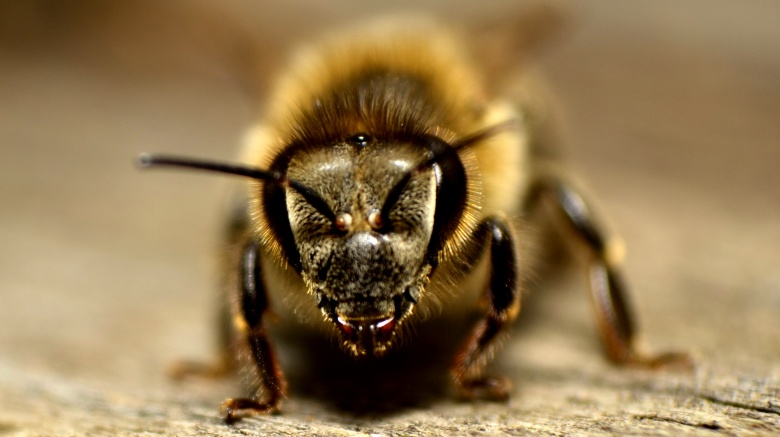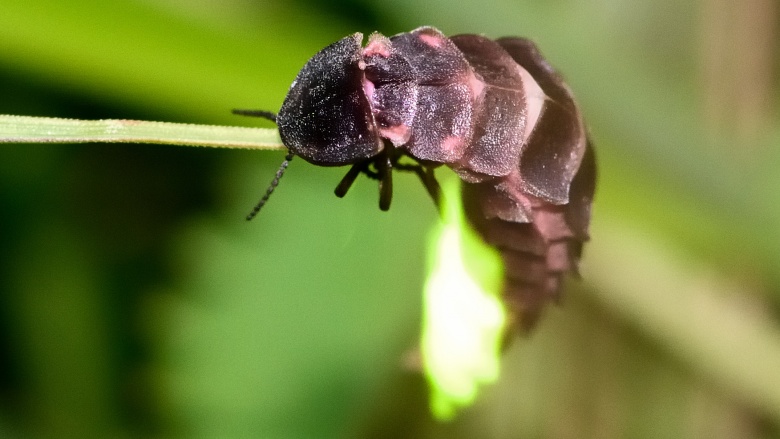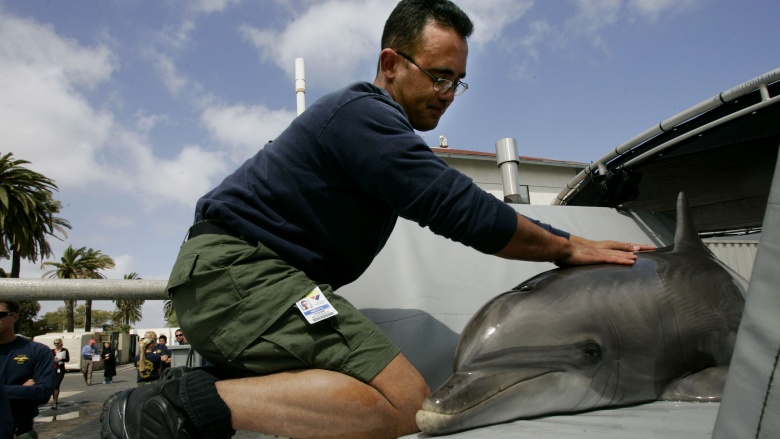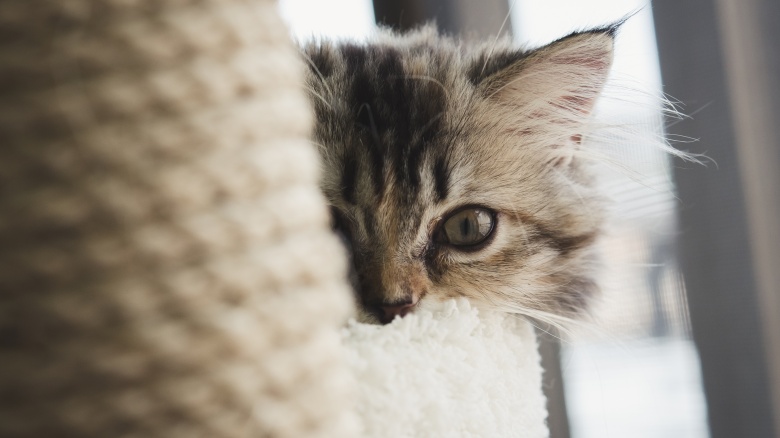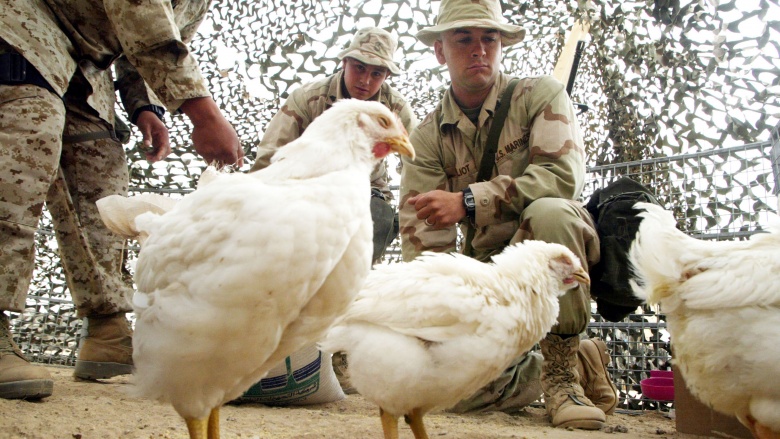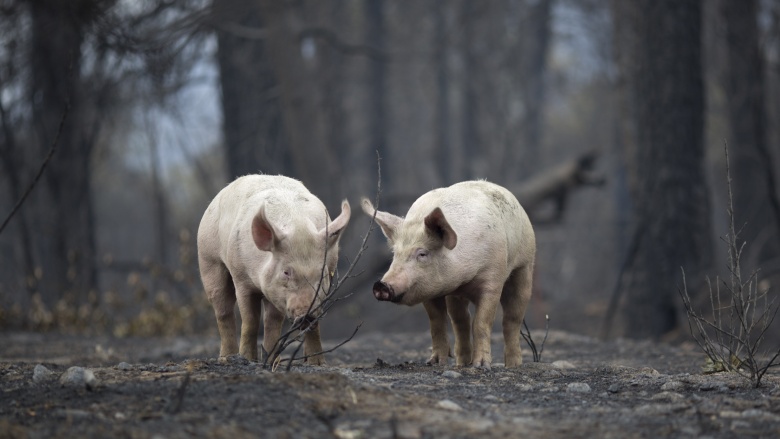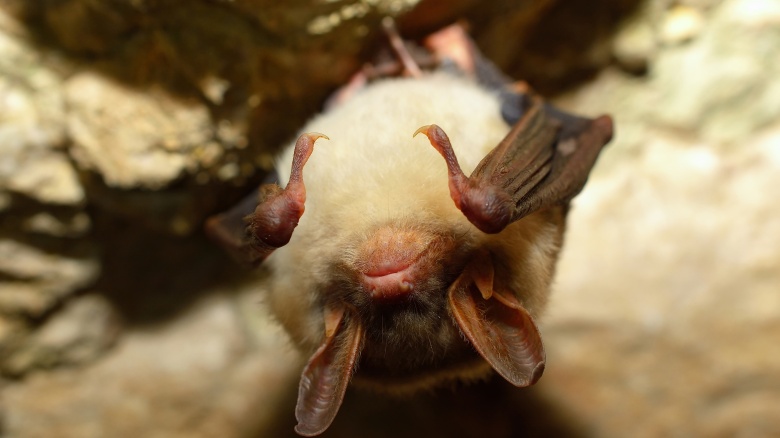Times Countries Used Weird Animals As Weapons
Humans have exploited animals for war since ancient times, with war horses and dogs going back for centuries. But sometimes, countries have used animals in unusual and weird ways for bombing missions, bird hunting, and even map reading.
Bees at Tanga
Western textbooks forget about the campaign for East Africa during World War I, which devolved into insanity from the start. The opening amphibious assault of the front, on the port town of Tanga, was fought between Indian British Expeditionary Forces, German colonial forces and ... local honeybees.
Believing that Tanga's beach had mines, British commander Arthur Aitken began landing troops three kilometers away from Tanga. The next day, Aitken ordered a march into the city. German troops were ready for the attack, cutting apart the Indian forces with machine gun fire. Chaos gripped the battlefield, with many units retreating and refusing to continue their march. The battle was already bad enough, but then the bees started attacking.
Before the battle, African locals placed beehives all over the field, infesting the area with wild bees. Spooked by the battlefield commotion, the bees swarmed and started attacking both British and German soldiers, stinging everybody because bees take their own damn side in battle — one particularly unlucky Indian soldier received 300 stings! Aitken halted the attack and pulled his forces back. That night, the Germans counter-attacked, despite being outnumbered eight to one. After losing nearly 900 soldiers, Aitken stopped the operation and retreated from Tanga. Had the bees not attacked, Aitken could have continued his assault, but the stinging insects saved Tanga for another day.
World War I glowworms
Over in Europe, during the same time that the bees were delaying the British, soldiers in the trenches were finding another weird use of a native insect. Allied soldiers in the trenches had huge problems during night operations. Not only was the battlefield dark, lights were impossible to use. Light up a match fire to read a map, and suddenly German artillery would come raining down, using the light for targeting. But war commanders did not want to give up on night operations, so the soldiers had to be clever.
Glowworms and fireflies were common in France, and huge populations of them somehow survived the original shelling that started the war. When Allied troops needed light, they would grab a jar and fill them with the glowing insects, just like children do during summer months. With enough insects in the jar, soldiers could use a nice, eerie glow to light their maps and conduct attacks without fear of German shelling. The glowworms were so critical to the war effort, Britain unveiled an Animals in War memorial on London's Park Lane, dedicated in part to the glowing insects that were pressed into duty during the war.
Chinese battle monkeys
Before the days of laser guided bombs, ancient armies had to use non-conventional tactics to deliver explosives exactly where they needed them. Catapults were not very accurate, and arrows could not deliver precisions strikes, so sometimes animals became mobile bombs. During the ancient Chinese battles of the Southern Song Dynasty, monkeys got used as live bombs. They were given jackets of straw and dipped in oil — lit on fire after, the monkeys were released into enemy camps. Running around in flames, the monkeys would light tents on fire and cause tons of damage.
The Chinese still use monkeys today, just with less horrifying results. Last year, the Chinese military was planning a huge parade to commemorate World War II. Complete with tanks, soldiers and airplanes, the planners feared migratory birds would disrupt the parade by flying into jet engines and destroying the overflying airplanes. To protect the planes, the Air Force trained adorable macaque monkeys to climb trees and dismantle bird nests around the parade route and military bases. Training began and, within a week, the monkeys were out in the field, protecting the airmen of the Chinese Air Force. Each monkey could dismantle six to eight nests a day. Some even learned how to salute their superior officers. We have to admit, being a Chinese monkey trainer sounds like the most adorable job in any armed force, anywhere.
Dolphin anti-terrorism
Dolphins are freaky smart, and in the terrorist panics following 9/11, the United States began training them as anti-terrorist weapons. Marine biologists have known for a long time that dolphins are trainable and capable of complex tasks on par with rudimentary human problem solving. Concerned that terrorists in scuba gear could infiltrate the United States waterways, Navy biologists started training our marine friends.
Military dolphins soon learned to do a variety of tasks. In 2003 dolphins served overseas to clear a port of mines, so Marines could land safely. In Washington state, dolphins patrol the waters near Naval Base Kitsap-Bangor, watching out for enemy terrorists intent on disabling the nuclear submarines housed there.
But the strangest thing the Navy is doing with dolphins is training them to shoot poison dart guns underwater. Experts say that up to thirty dolphins are trained to use the toxic dart guns, which became a big concern after Hurricane Katrina. According to accident investigators, Katrina destroyed the holding pens for the dolphins, letting them escape out into the wild. The Navy, of course, denies the acquisitions, but somewhere off the Gulf of Mexico, there are dolphins swimming around, possibly trained to shoot toxic darts at people.
Acoustic Kitty
The Cold War was a time of crazy ideas and countless spy schemes. The United States hatched tons of ideas for spying inside the Soviet Union, but they were also concerned about the few Soviets inside the United States, namely those in their Washington D.C. embassy. But you can't just blatantly spy on foreign dignitaries in one's own embassy, so the US had to come up with a secret plan.
After going through different ideas, the CIA decided on a project known as Acoustic Kitty. They recruited a cat for the plan, and surgically implanted listening devices into the poor feline's body. With a full set of microphones and radio transmitters, Acoustic Kitty was one of the earliest examples of a cyborg animal, and the CIA thought they had hit on the next big thing in espionage.
Unfortunately, as every cat owner knows, cats are not easy to train. They have a mind of their own, and they love disobeying their humans. After fitting Acoustic Kitty with the tech, two CIA agents brought it out to a D.C. park for the first test. Tasking the cat with listening to two men talking, the agents let Acoustic Kitty go. Instead of walking up to the men, Acoustic Kitty turned the other direction, ran out into a nearby street, and got squashed by a car. The untimely death ended the program. The official CIA report deadpanned: "Our final examination of trained cats ... convinced us that the program would not lend itself in a practical sense to our highly specialized needs."
Pigeon photography
As early as the American Civil War, military leaders realized that airborne recon photography was important for battles. But in the days when airplanes were fragile, wooden machines that glided along slower than modern cars, recon pilots were easy targets for enemy fire. German doctor Julius Neubronner realized that this was a problem for the German army. and in 1908 invented a pigeon camera. As in, a camera, used by a pigeon.
The camera was small enough to fit on a vest attached to trained pigeons, though as smart as pigeons are, Neubronner realized that they couldn't exactly operate the camera, so he fitted the cameras with a timer. When the pigeons got released, they would fly over the target while the timed camera took the pictures. When World War I broke out the pigeons got pressed into combat, but records are unclear about how effective the birds actually were.
In an odd turn of events, the idea came up again for World War II, and even the CIA used pigeons for photography during the Cold War. The CIA reports are still mostly classified, which leads us to wonder what top-secret information the agency is hiding about our feathered friends.
Operation: Kuwaiti Field Chicken
One of the most terrifying inventions in modern warfare has to be poison gas. Since its battlefield introduction in World War I, armies have developed ways to detect gas so that the soldiers have time to get on their gas masks. When the United States went to war in Operation Desert Storm, military planners knew that the Iraqi army had gas weapons, and looked for ways to protect the soldiers.
For some inexplicable reason, there was no R&D funding for gas detection, and the commanders had to come up with clever ways to detect gas. Operation Kuwaiti Field Chicken was born using chickens as mobile gas detectors (poison gas being KFC's 12th secret spice). Chickens, see, have sensitive respiratory systems. If there's poison gas in the air, they will die before the humans, giving observant soldiers time to get suited up. On their first combat deployment, the test group of chickens hung around their base, but one morning the soldiers woke up to see them all dead. Panicking, the soldiers thought they had been gassed, but it turned out that the chickens had just frozen from the nighttime cold.
Even though Operation: Kuwaiti Field Chicken was a failure, it came back again for the second Gulf War, because funding for actual gas detection had still not come through. Once again, the chickens died before their first whiff of gas. Grateful soldiers buried the hapless chickens in the desert, meaning that, somewhere in the middle of Iraq, there are now tombstones that delightfully bear the names Captain Popeye, PFC King, Lance Cpl. Pecker, and the grave of The Unknown Chicken.
Flaming pigs
Armored war elephants were the tanks of ancient warfare. First appearing in 400 BC during Indian wars, the war elephant quickly spread throughout the ancient world, striking fear into enemies when they appeared on the field of battle. After Alexander the Great died in his quest to conquer the world, his generals squabbled over the remains of the empire, and a few used war elephants.
During the following wars, General Antigonus II Gonatus attacked the town of Megara, trying to carve out his place in the fractured empire. He used the elephants to take the brunt of the siege. Instead of giving up the second they saw giant armored elephants at their gates (like we would have done), the Megarians looked around, saw they had a ton of pigs hanging out, and devised a cunning plan.
It was common knowledge during ancient warfare that pigs scared elephants, with the Roman Republic using hordes of pigs to scare war elephants. But the Megarians took it one step further. They doused the pigs in oil and lit them on fire, sending the squealing horde out the gates and into the elephants. The elephants panicked, running away from the burning pork, despite their handler's commands. The Megarians won the siege, even if their whole city probably smelled like bacon for months afterwards (lucky them).
Wojtek the bear
The most stereotypically Slavic war story of all time was Wojtek, a bear who fought all through World War II for the Polish army. Wojtek's company discovered him in 1942 while travelling through Persia after being released from Soviet labor camps. They discovered the little cub without a mother, took the cub with them, and he traveled all the way from Persia to Poland with his new-found company.
While that is impressive enough, once Wojtek got to Poland, the soldiers who found him did not want to give him up, but their commanders were skeptical of a bear hanging around on the front lines. Before they could decide what to do with Wojtek, the artillery crews got off to the front, and Wojtek tagged along. As they entered combat, the soldiers noticed that Wojtek was not afraid of gunfire, and was actually calm while battle raged around him. They also noticed that, during combat, he tried to move the shell boxes towards the guns to copy his owners. Deciding to capitalize on Wojtek's strength, the soldiers trained him to carry artillery shells from the supply trucks up to the firing line! Wojtek was even given a rank, serial number, and payment like a real soldier.
From 1943 to the end of the war Wojtek carried shells, and was never killed. After the war ended, he retired from military service and lived in a zoo until he died in 1963. He is most likely the only bear in history to receive military combat pay, which he likely blew entirely on honey.
Bat bombs
During World War II, the United States was looking for anything they could use to quickly end the war with Japan. With the atomic bombs still a ways off, they experimented with exotic weapons, some controlled by animals. Out of all the projects, the weirdest was incendiary bat bombs.
During a hike, dentist Lytle S. Adams hatched a plan to use bats for weapons. Bats are super good at night navigation, and make excellent animals to carry weapons. If they could be trained to carry bombs, thousands of them could fly around Japan, lighting things on fire with incendiary weapons. Adams forwarded his proposal to the defense department, who took one look and said: "It sounds like a perfectly wild idea but is worth looking into."
Suddenly, the Army was capturing thousands of bats and shipping them off to airbases for bomb training. Engineers developed cardboard containers for airdropping hundreds of bats over Japan. Initial tests were promising, except for that one time when a bomb exploded before the bats were loaded, lighting a hanger on fire and burning a General's car. After 30 tests, the Marines cancelled the project, since it did not have an advantage over conventional bombers. The bats got released back into the wild, saved from having to fight over Japan. As for Adams, he had more ideas up his sleeve, like bombing prairies with seed packets and building a fried chicken vending machine. Maybe the Army could have used him in Kuwait.

